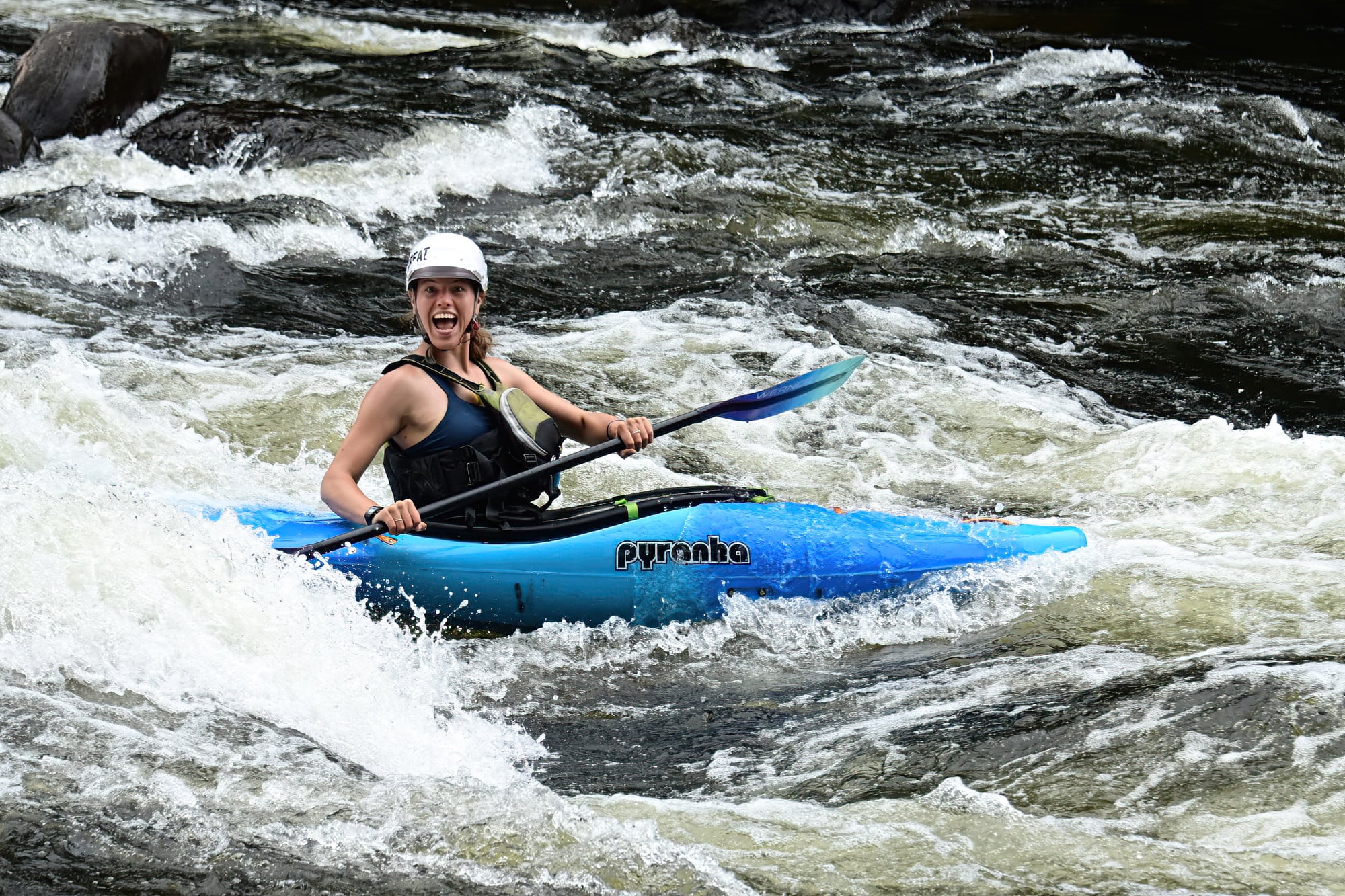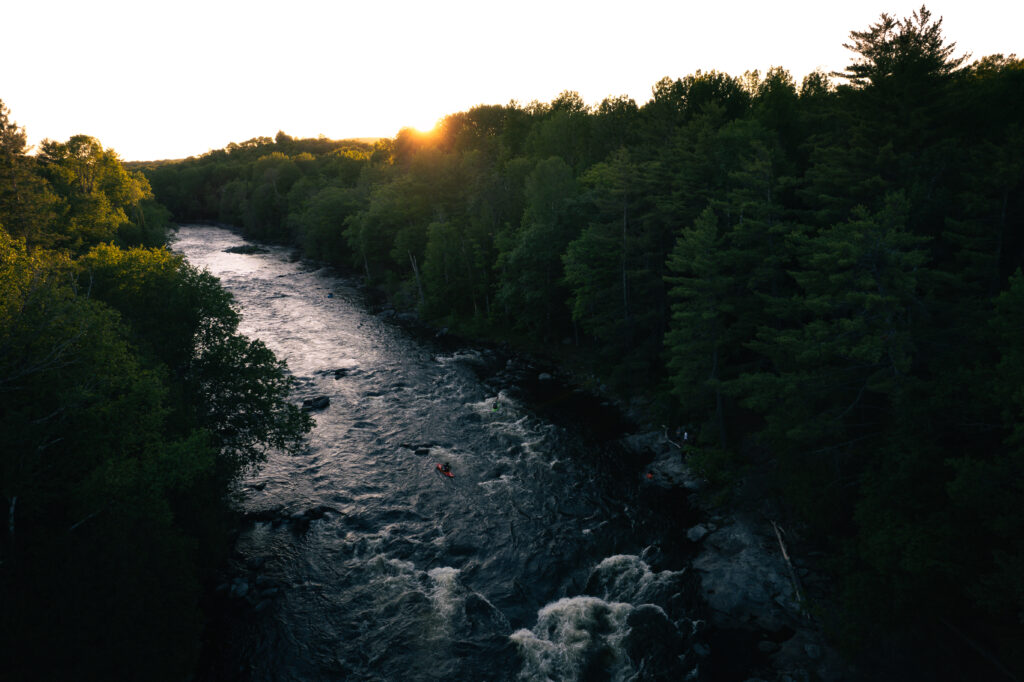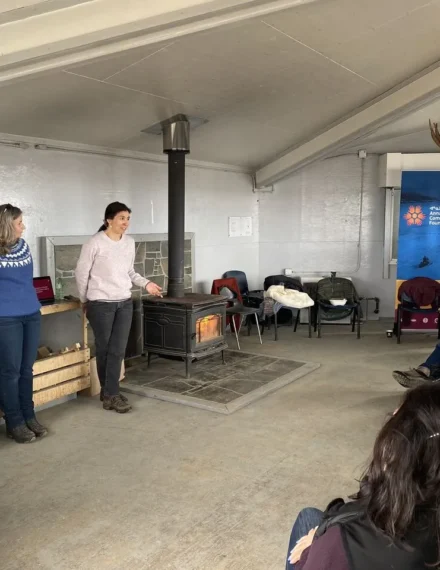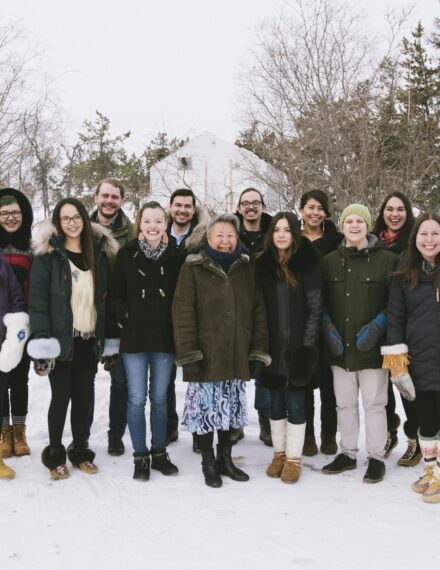
Stefi van Wijk doesn’t remember the first time she paddled the Madawaska River. “It’s always been part of my life,” she says.
As the river carves its way through the Canadian Shield, from its source in the Algonquin highlands en route to the Ottawa River, it frequently erupts into rapids. That makes it a popular destination for all types of paddlers.
In 1969, van Wijk’s grandparents saw the potential and began building a kayaking and canoeing school on the banks of the Madawaska near Barry’s Bay, Ontario. Now, van Wijk and her sister are the third generation to run the Madawaska Kanu Centre, introducing more people to the joys of whitewater, and protecting the river that means so much to them.
“It’s our responsibility as recreators to also care for the land and waterways that we’re playing on,” says van Wijk. “We need to do what we can to take care of them and give back.”
Water monitoring made easy
For the past four years, Madawaska Kanu Centre’s office team have been tracking the river’s water quality. Once a month, unless the conditions are too icy, they measure parameters like pH levels, dissolved oxygen and transparency.
“I’m no lab scientist whatsoever!” van Wijk says. But the testing kits provided by Water Rangers — along with clear instructions and monthly email reminders — make the process easy.
Once they’ve collected the data, the centre’s staff upload it to DataStream’s open-access platform. And van Wijk knows the information gets used.

The Middle Madawaska River, Credit Madawaska Kanu Centre
Better insights, deeper connections
Take the example of water temperature, which is significantly affected by the hydroelectric dam upstream from the Madawaska Kanu Centre.
“The dam has two ways of passing water,” van Wijk explains. “They can pass water from the depths, which is always four degrees, and they can pass water over the top, which is whatever the top of the lake temperature is. And that temperature really does affect the ecosystem.”
If the river gets too cold, walleye hatching rates drop dramatically. So, Ontario’s Ministry of Natural Resources and Forestry keeps a close eye on the data gathered by the Madawaska Kanu Centre to make sure the dam is operated appropriately.
Van Wijk sees this kind of monitoring as a way for communities to come together to care for a communal space. “It’s really cool that there are these citizen science initiatives that empower lovers of rivers, wherever they happen to be, to feel like they’re making a difference in the caring and monitoring of the rivers that they live and play and work on,” she says.
Tracking water quality in the Madawaska has certainly deepened van Wijk’s bonds to the waterway that has shaped her life. “I’m approaching the river in a different way now that I have this relationship with it,” she says. “There’s a pride in being a steward of a river.”
Header photo: Stefi van Wijk paddling on the Middle. Credit Madawaska Kanu Centre.


